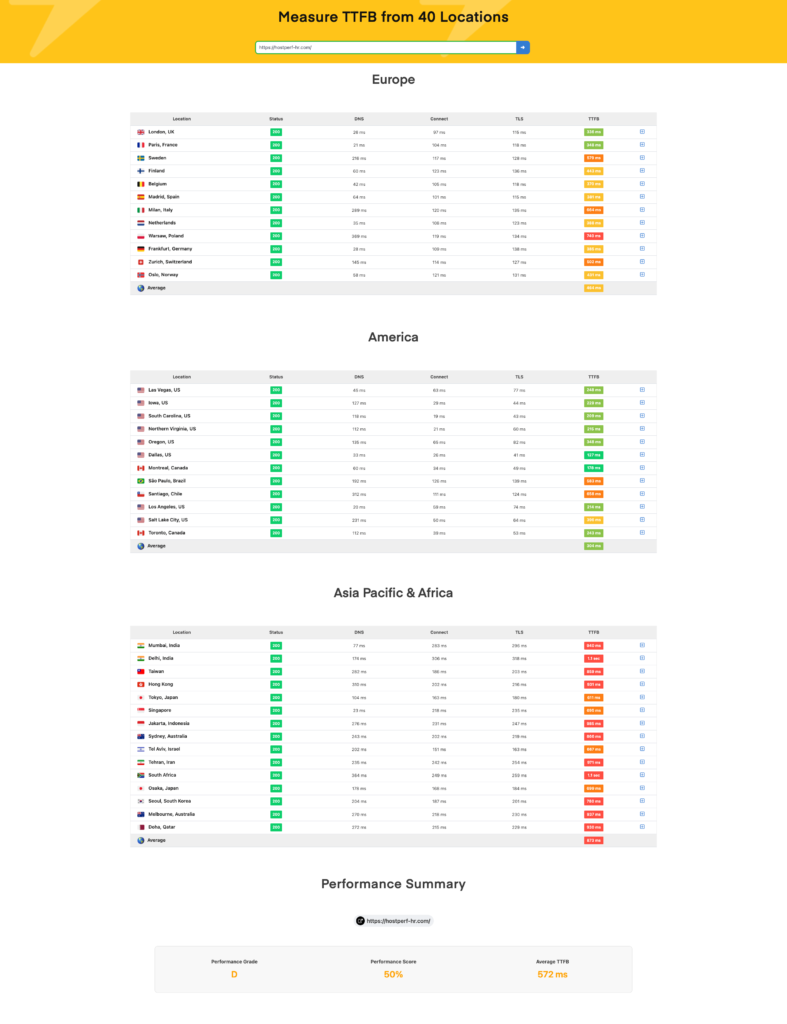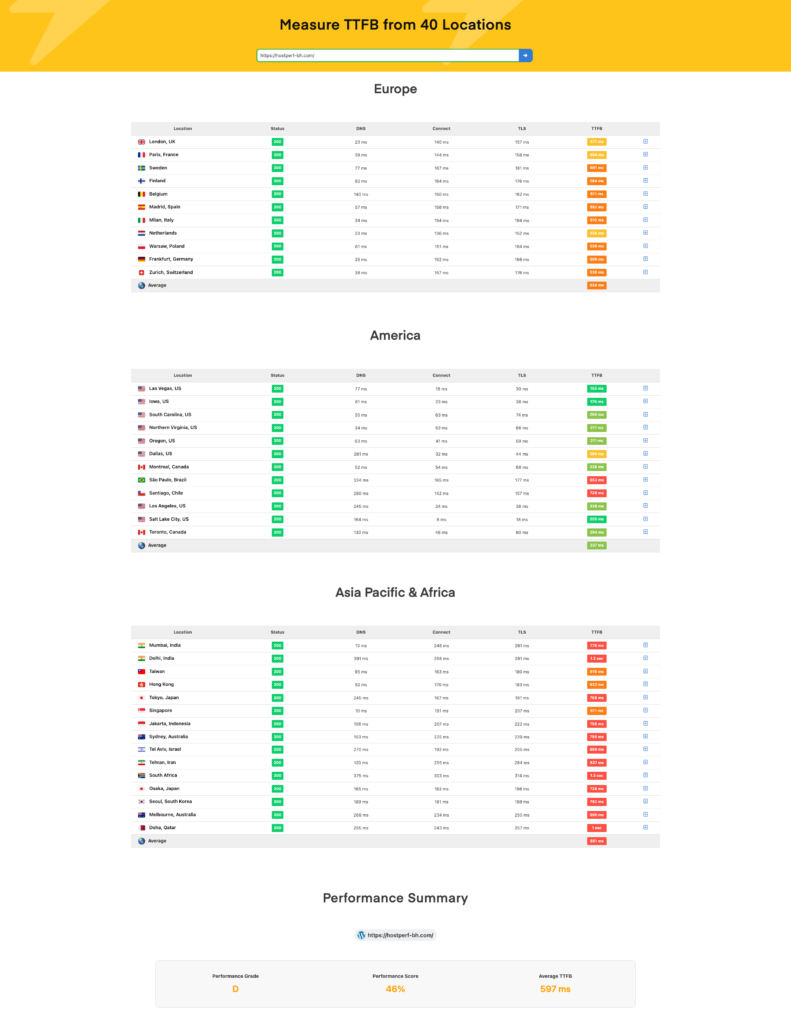Comparing Hostinger and Bluehost is one of the most requested topics at Hostingstep. Let’s look into our data and see what story it tells.
Summary
Hostinger offers a better TTFB of 375 ms compared to Bluehost, which offers 409 ms. In the uptime test, Hostinger scores better with 99.97%, whereas Bluehost recorded 99.95%. In simple numbers, Hostinger had over 2 hours of downtime in the entire year, and Bluehost had double that; that’s over 4 hours of downtime. In the case of reliability, Hostinger wins big here.
In load testing, both don’t perform well. If you are planning to host your big traffic site, both shouldn’t be on your list. While Hostinger took 2412 ms to handle the 500 visitors load test, Bluehost did it as 438 ms but with a lot of timeout errors. The time taken by Hostinger is bad, as Bluehost failed to handle the load.
Overall, Hostinger is slightly better than Bluehost in terms of overall performance metrics. If you consider pricing, again, Hostinger does better with the most affordable first-year and renewal pricing than Bluehost.
I personally love Hostinger’s control panel, too, over the traditional setup of Bluehost. Overall, I put my vote to Hostinger.
Hostinger Vs. Bluehost
Hostinger was founded in 2004 as a shared web hosting service. It now hosts over 2 million websites on its platform. The service is backed by a 30-day money-back guarantee. It has data centers all around the world with Hostinger CDN to speed up your sites.

On the other hand, Bluehost is a renowned web hosting company that is very popular among small business owners.

Hostinger Vs. Bluehost: Performance
1. TTFB
TTFB is our first performance test to compare Hostinger and Bluehost. A slow TTFB negatively impacts the overall site load time. This TTFB can’t be fixed by any plugin, so it’s entirely up to the hosting company to deliver a good speed or not.
While testing the TTFB of both services, Hostinger recorded an average TTFB of 375 ms in a year. At the same time, Bluehost got a TTFB of 409 ms, thus making it a bit slower.
Both the sites are tested with Caching ON and no CDNs are used. So, Hostinger naturally offers the fastest TTFB, and it wins here.
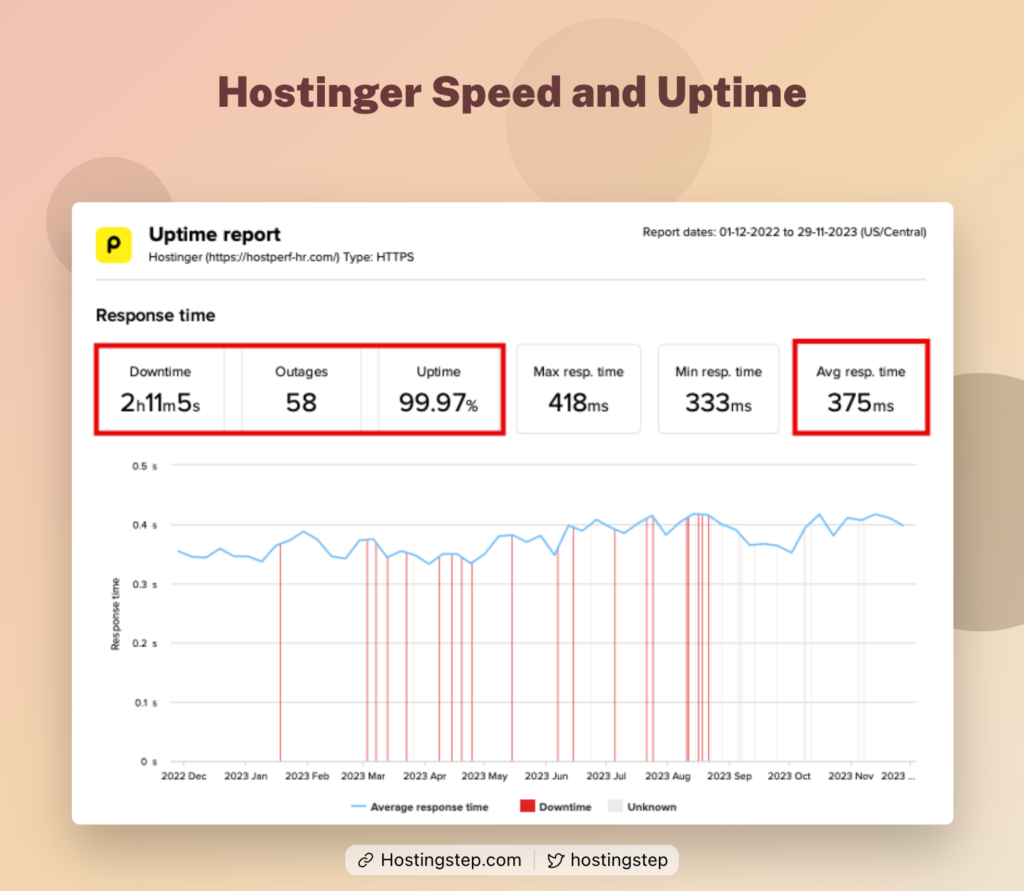
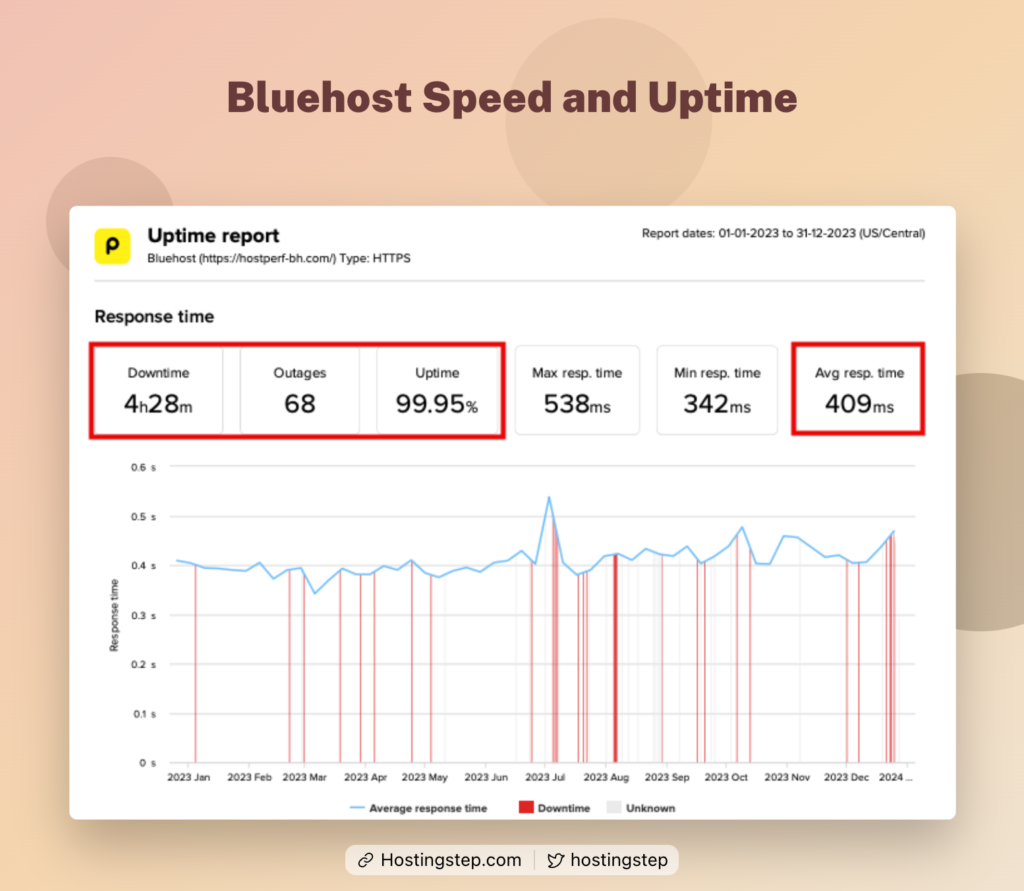
2. Uptime
A good uptime offers good back support to faster servers. No matter how fast your servers are, if they’ve got bad uptime numbers, it should be avoided.
In the uptime test, Hostinger recorded 99.97% uptime with over 2 hours of total downtime, while Bluehost recorded 99.95% with over 4 hours of downtime in the same year.
Uptime is another crucial aspect of performance, and without constant availability, your website is bound to lose a lot of potential traffic and opportunities.
3. Load Testing
Load testing is our advanced testing model to determine whether the server can handle a sudden spike in traffic.
In this load test, 500 visitors are sent to the site, and the average response time is calculated. The lower the response time, the faster the servers will be. Our test shows both Hostinger and Bluehost don’t perform well.
While Hostinger took 2412 ms to handle the load, Bluehost did it at 438 ms, but it couldn’t handle the full load and showed up timeout/500 errors. Though Hostinger completed the test handling all the load, the response time of Hostinger is poor; it is probably the slowest host to handle the load.
So, its better to avoid both the host and look for alternatives, if you concerned about this load test.


4. Core Web Vitals
Core Web Vitals is a crucial aspect that Google has proposed to provide a better user experience to searchers. I tested Hostinger and Bluehost to evaluate their Core Web Vitals.
My Hostinger site showed a Largest Contentful Paint of 721 ms, a Total Blocking Time of 0 ms, and a Cumulative Layout Shift of 0.07.
On the other hand, my Bluehost site had a Largest Contentful Paint of 461 ms, a Total Blocking Time of 0 ms, and a Cumulative Layout Shift of 0.07.
Bluehost’s Core Web Vitals results were impressive.
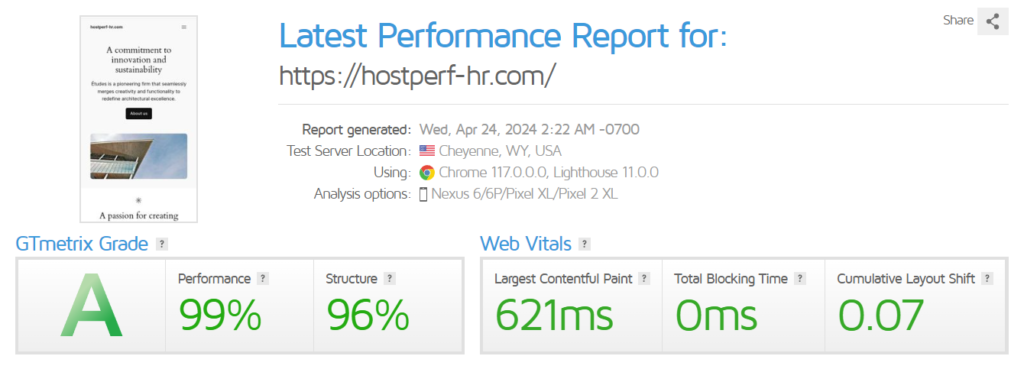

5. Global TTFB
The Global TTFB test helps to determine whether the servers can deliver faster pages to global visitors.
In this test, the sites are pinged from 40 global locations, and the overall Global TTFB is calculated.
Our data shows Hostinger got 572 ms, and Bluehost secured 597 ms. Since there is little difference, both hosts offer a decent score in handling global traffic.
